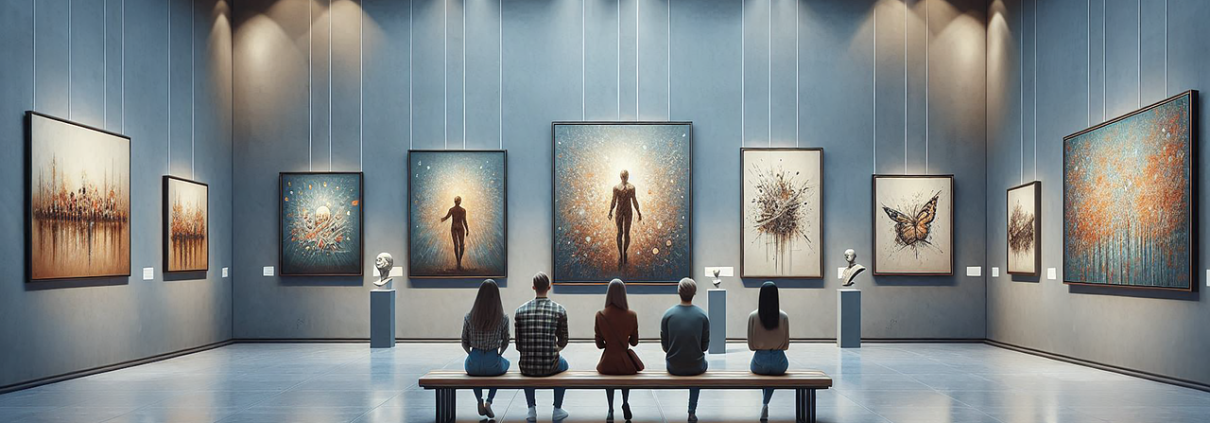Mural painting
Mural painting is a form of artwork applied directly to walls, ceilings, or other large surfaces, often in public or communal spaces. This technique has been used for centuries to create impactful, large-scale visual stories that are accessible to a wide audience. Mural painting can be found in ancient civilizations, such as the Egyptian tombs, the frescoes of the Renaissance, and contemporary urban street art.
Key Techniques in Mural Painting
- Fresco:
- Buon Fresco: In this traditional technique, pigments mixed with water are applied to freshly laid lime plaster. As the plaster dries, the paint becomes an integral part of the wall, resulting in a very durable surface. Famous examples include the Sistine Chapel ceiling by Michelangelo.
- Fresco Secco: This method involves painting on dry plaster. While it’s easier to work with because the artist can take more time, it is less durable than buon fresco. This technique is often used for details that are added after the plaster has dried.
- Secco (Dry) Mural:
- In this method, pigments are mixed with a binding agent like egg yolk, oil, or acrylic medium and applied to a dry wall surface. Unlike fresco, this technique doesn’t require working on wet plaster and allows for greater flexibility and more vibrant colors.
- Sgraffito:
- A technique where layers of plaster or paint are applied, and then the top layer is scratched away to reveal the underlying layer, creating an image or pattern. This technique is often used to add texture and depth to a mural.
- Acrylic Mural Painting:
- Acrylic paints are widely used in contemporary mural painting due to their versatility, fast drying time, and durability. They can be applied directly to various surfaces, including brick, concrete, and wood, and can be layered and mixed easily to create vivid, long-lasting murals.
- Spray Paint and Street Art:
- Spray paint is commonly used in modern mural art, especially in urban environments. Street artists and graffiti artists often use this medium for its speed and the ability to cover large areas quickly. Techniques include stenciling, freehand spraying, and the use of masking to create detailed and colorful murals.
- Mosaic Mural:
- This technique involves creating a mural from small pieces of glass, stone, or tile (tesserae) to form an image. The process is labor-intensive but results in a highly durable and often stunning visual effect.
- Mixed Media Murals:
- Contemporary murals often combine painting with other materials such as collage, photography, and even digital projections. Mixed media murals can create layered meanings and complex textures, incorporating both traditional and modern techniques.
Steps in Mural Painting
- Planning and Design:
- The process begins with conceptualizing the mural’s theme, message, and overall design. The artist might create sketches or digital mock-ups to plan the composition, color palette, and placement of elements within the mural.
- Surface Preparation:
- The surface must be clean, smooth, and sometimes primed before painting begins. Depending on the material, this may involve washing, sanding, or applying a base coat to ensure the paint adheres properly.
- Grid Transfer or Projection:
- For large or complex designs, artists often use a grid system or a projector to transfer the design from a small sketch to the large wall. This ensures that the proportions and details of the design are accurately scaled up.
- Underpainting:
- Some artists begin with an underpainting to establish the basic shapes and composition. This can be done in a monochromatic palette to map out shadows, highlights, and overall tonal values before adding full color.
- Layering and Detailing:
- Once the basic forms are established, the artist builds up layers of color, adding details, textures, and highlights. Techniques like glazing (applying thin, transparent layers of paint) or scumbling (a thin layer of opaque or semi-opaque paint) can create depth and complexity.
- Final Touches:
- The artist adds final details, adjusts colors, and refines the mural to ensure that it matches the original vision. This step may include adding small highlights, correcting any errors, and ensuring that the mural is balanced and complete.
- Sealing and Protection:
- To protect the mural from weathering, graffiti, or other damage, a clear sealant or varnish is often applied. This can help preserve the colors and extend the life of the mural.
Historical and Cultural Context
- Ancient Civilizations: Mural painting has been a prominent art form in many ancient cultures, such as the cave paintings of Lascaux, Egyptian tomb murals, and the vibrant murals of Mesoamerican civilizations like the Maya and Aztecs.
- Renaissance Frescoes: In Europe, mural painting reached its peak during the Renaissance, with artists like Michelangelo and Raphael creating monumental works in churches and palaces.
- Mexican Muralism: In the 20th century, Mexican muralists like Diego Rivera, José Clemente Orozco, and David Alfaro Siqueiros used mural painting as a powerful medium for social and political commentary.
- Contemporary Street Art: Today, mural painting continues to evolve, with street artists and community projects using murals to reclaim public spaces, tell local stories, and make art accessible to a wider audience.
Significance and Impact
Murals are a powerful way to transform public spaces, convey messages, and engage communities. They can beautify environments, tell stories, celebrate cultural heritage, or make political statements. As a public art form, murals are accessible to everyone, creating a shared experience that can inspire, educate, or provoke thought.



